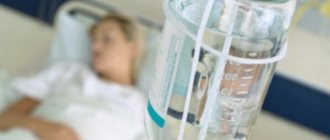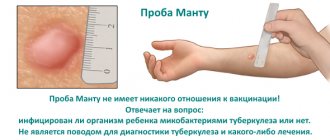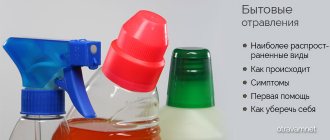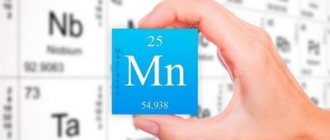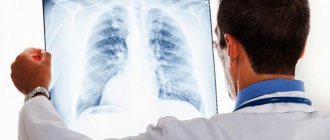Herbal cardiac medicines are used to treat acute heart failure. Treatment with this group of drugs can be a course or a single dose; in any case, they help the heart work, ensuring a healthy myocardium.
Poisoning with heart medications of plant origin is explained by some properties of these glycosides, which help the medication accumulate in the patient’s body, which causes pathological manifestations.
This group of medications is prescribed by a doctor based on appropriate medical conditions. Glycosides also have immediate action; they are used to relieve acute situations in diseases.
Other heart medications of herbal origin are prescribed for treatment in courses, during which the doctor adjusts the dosage of the medications.
Symptoms of cardiac glycoside poisoning
To provide timely and correct assistance, it is very important to establish in time what we are actually dealing with. To do this, it is important to know the clinical picture of digitalis intoxication - what it is, how it manifests itself and what the main syndromes are. There are several of them:
- gastrosyndrome (disruption of the gastrointestinal tract), manifested in the form of a pronounced decrease or complete absence of appetite, nausea, unstoppable vomiting with bile (less often with blood), diarrhea and, as a result, dehydration, as well as abdominal pain;
- headache and dizziness due to disruption of the central nervous system;
- neurological syndrome in the form of convulsions, overexcitation or, conversely, depression, insomnia or the appearance of nightmares, sometimes delusions and hallucinations;
- blurred vision and a decrease in its acuity up to blindness, photophobia, the appearance of green or yellow spots and dots before the eyes;
- breathing disorders: shortness of breath, hypoxia (oxygen starvation) and, as a result, cyanosis (bluish tint of the skin);
- cardiovascular disorders - extrasystole, bradycardia, tachycardia, atrial fibrillation; in addition, digitalis intoxication is detected quite easily on the ECG: rhythm disorders and all types of conduction are determined (especially alarming signs that can lead to death due to suffocation or cardiac arrest are the development of ventricular extrasystole, paroxysmal tachycardia and atrial and ventricular fibrillation) .
Adverse reactions
The medicine, even without an overdose, can cause undesirable effects:
- increased or decreased heart rate, AV block, extrasystole;
- nausea, vomiting, loose stools, abdominal pain, intestinal necrosis, refusal to eat;
- sleep problems, headaches, vertigo, impaired consciousness and sensitivity, radiculopathy, neuritis, fainting, visual hallucinations;
- enlargement of the mammary glands;
- decreased platelet levels, nosebleeds, minor hemorrhages;
- allergy;
- vision problems.
First aid for digitalis intoxication
It is important to remember that the stronger the degree of intoxication, the more pronounced the symptoms, and the faster they appear (within minutes or hours after taking the drug). In this case, the condition quickly worsens, so help should be immediate. This condition requires the use of antidotes and resuscitation measures.
- First, you need to stop using cardiac glycosides (discontinue the drug).
- This is followed by a series of measures to remove toxic substances from the body: the use of saline laxatives (through a tube) and the administration of activated carbon to absorb toxins and prevent their further absorption (gastric lavage is recommended only in extreme cases).
- It is also necessary to stop the circulation of the toxic substance in the body, for which they take orally, for example, Vaseline oil.
- Oxygen inhalation and intravenous administration of glucose with insulin and vitamin B6 are prescribed.
- A very important task is to normalize the heart rhythm and cardiac conduction through the use of drugs against arrhythmia (up to pacing and defibrillation, if drugs do not help).
- If the victim is overexcited, antipsychotics are administered intravenously.
- Myocardial contractile function is regulated by reducing the effect of calcium through the administration of calcium channel blockers.
- Myocardial excitability is normalized in case of arrhythmia or cardiogenic collapse by administering calcium thetacine in a glucose solution or in an isotonic solution.
- In case of potassium deficiency (hypokalemia), potassium supplements are prescribed.
In any case, if digitalis intoxication occurs, treatment should only be prescribed by a doctor and should be carried out in a hospital setting.
Classification and mechanism
Cardiac glycosides are obtained from plants (strophanthus, jaundice, lily of the valley, adonis, foxglove). According to their properties, they are divided into three types: non-polar (Digitoxin), polar (Korglykon, Strophanthin) and relatively polar (Celanide, Digoxin). This determines the difference in the effects of glycosides on the body.
When prescribing drugs for the treatment of cardiac pathologies, cardiologists take into account the periods of exposure to glycosides.
Three periods of glycosides:
- Latent period. This is the time from the moment the patient receives the medicine until signs of its effect on the body.
- Duration of therapeutic effect. This is the period from the manifestation of an action to its end.
- The period of optimal action of the drug.
Digitoxin exhibits its therapeutic effect not as quickly as Strophanthin, but acts longer. The second is a fast-acting drug, but its effect is short-lived. Other glycosides are in the middle of the list of these drugs in terms of duration and speed of effect.
The speed of manifestation of the clinical effect depends on the dose taken and the method of treatment. Moreover, the greater the amount of medication and the shorter the latent period, the earlier intoxication will occur.
To avoid an overdose, a minimum amount of the drug is usually prescribed, at which a sufficient therapeutic effect is observed. The smaller the single dose of the drug, the less often complications occur during treatment.
For mild heart failure, the cardiologist prescribes a minimum dosage, and if the therapeutic effect is insignificant, he gradually increases it.
Antidote for cardiac glycosides
The action of the digoxin antidote is to bind free digoxin in the body and stop its interaction with myocardial cells. Antidotes are fragments of antibodies against digoxin in an amount adequate to the dose of the glycoside that is absorbed into the blood (the formula for calculating the dose is always included in the instructions for the antidote drug). Half an hour after receiving the antidote, the glycoside content in the body increases, it combines with protein, loses its activity and is excreted from the body.
Since the antidote is obtained by the synthesis of antibodies formed in the body of sheep, people who have previously received drugs containing sheep or chicken egg whites may experience an allergic reaction.
Clinical data
What you should pay attention to when poisoning with digitalis drugs:
- Consider your mental and conscious state.
- Carefully examine the condition of the heart.
- Look for signs of neurological disease.
- Measure serum digoxin levels, potassium, and other electrolytes.
- Electrocardiogram.
- Bradycardia.
- Multiple ventricular extrasystoles.
- Ventricular bigeminy.
- Paroxysmal atrial tachycardia.
- Ventricular tachycardia.
- Ventricular fibrillation.
Treatment of digitalis intoxication
The treatment regimen is as follows:
- administration of an antidote by administering the drugs “Unitiol”, “Digibind” or “Digitalis-antidote BM”;
- elimination of barycardia and vomiting with atropine sulfate;
- arrhythmia is relieved by administering diphenine or a polarizing mixture (glucose, potassium chloride, insulin and cocarboxylase);
- normalize cardiac activity with the help of riboxin;
- replenish the loss of moisture in the body as a result of dehydration by administering infusion solutions;
- if there are seizures, they are relieved with anticonvulsants;
- the general condition of the body is improved by prescribing a course of vitamins and oxygen therapy;
- in the absence of positive dynamics, hemosorption is performed; in severe cases, hemodialysis is performed.
Causes of overdose
Poisoning with glycosides is possible for the following reasons:
- the child found and drank the medicine;
- exceeding the dosages prescribed by the doctor or indicated in the official instructions;
- taking medication repeatedly due to memory problems;
- error in dosage due to poor vision or inattention;
- admission for the purpose of suicide;
- taking other drugs at the same time, for example, diuretics and glucocorticoids.
The likelihood of signs of glycoside intoxication increasing if a person has the following health problems:
- decreased potassium levels in the bloodstream;
- inflammation of the heart muscle;
- increase or decrease in sodium levels in the vascular bed;
- "pulmonary" heart;
- increased calcium levels in the bloodstream;
- hypofunction of the thyroid gland;
- decreased magnesium levels in the blood;
- excess weight;
- pronounced expansion of the cavities of the heart.
The likelihood of drug overdose increases in older age groups.
Prevention of cardiac glycoside poisoning
If you are forced to take cardiac glycosides for the treatment of chronic heart failure, in no case exceed the dosage and pay attention to the slightest negative changes in your condition listed in the list of symptoms of intoxication with cardiac glycosides. Even a slight increase in dose can lead to dire consequences and even death, and it should also be taken into account that cardiac glycosides tend to accumulate in the body.
If you are engaged in herbalism and are a fan of herbal medicine, it is important to remember that poisoning with cardiac glycosides can occur mainly when using digitalis as a medicinal plant (poisoning with plants such as oleander and lily of the valley can also have a similar effect). It is important to know that currently any independent use of foxglove as a medicinal plant is prohibited. As a medicinal plant, digitalis was used to treat the heart, as well as to reduce swelling and increase urination. It has been known for at least 4 thousand years; in Europe it was already popular in the 16th and 17th centuries, but due to frequent cases of poisoning it was periodically banned. But in the 18th century, digitalis glycoside was discovered in Great Britain, but it was used extremely carefully due to the difficulty of finding a safe but effective dose (overdose occurs extremely easily due to its high toxicity). In a word, foxglove is a classic illustration of the immortal saying of Paracelsus: “Everything is poison and everything is medicine, it’s just a matter of dose.”
- Author: Elena
Rate this article:
- 5
- 4
- 3
- 2
- 1
(0 votes, average: 0 out of 5)
Share with your friends!
Information about medications
Cardiac glycosides are a group of herbal and synthetic medications that improve cardiac function.
This group includes the following drugs:
- Short-acting medications administered intravenously. These include Korglykon and Strophanthin.
- Medicines of medium duration of action, which are produced in ampoules and in oral dosage forms. These are the drugs Digoxin and Celanide.
Due to treatment with these medications, the heart begins to contract less frequently, but more rhythmically, stronger and more productively. This leads to improved blood flow in the body and reduced blood stagnation. The heart muscle rests longer and regains its strength. The myocardium's need for oxygen is reduced, cardiac glycosides have an anti-ischemic and diuretic effect, and restore impaired vascular tone in vital organs.
Herbal sources of remedies
Medicines belonging to the category of cardiac glycosides may be the result of processing of several sources, represented by:
- digitoxin;
- cordigititis;
- acetyldigitoxin;
- acetyldigoxin;
- gitoxin;
- celanide;
- lantoside;
- strophanthin K;
- korglycon;
- tincture of lily of the valley;
- infusion of adonis herb;
- dried adonis extract;
- adonizide;
- adonis-bromine.
The main mechanism of action is the inhibition of the enzyme responsible for the removal of three sodium ions from cardiomyocytes. An increase in the concentration of sodium ions causes inhibition of other enzymes.
The effect of using drugs in the form of cardiac glycosides suggests:
- the presence of a positive inotropic effect, explained by an increase in calcium concentration and an increase in myosin with actin;
- the negativity of the chronotropic effect due to the excitation of the depressor baroreceptor reflex;
- increasing the tone of the vagus nerves and slowing down the potential generation of actions in the sinoatrial node;
- increased tone of the vagus nerve as a result of the cardiac reflex;
- the negativity of the dromotropic effect as a result of an increase in the tone of the vagus nerve or a slowdown in conduction within the atrioventricular node.
The positive effect of bathmotropic action is an undesirable effect associated with the blockade of certain substances, the retention of Na+ ions at the cellular level and a noticeable decrease in resting potential indicators. In case of overdose, deviations of varying severity occur.
Pharmacokinetics
Digoxin and digitoxin may be prescribed as tablets. Digoxin is excreted through the kidneys with a half-life of 1.5 days, and digitoxin is mainly excreted through the liver and bile, followed by excretion through the intestines (enterohepatic circulation), which causes a half-life of 7 days. Therefore, due to potential toxicity, digoxin is usually preferred.
Digoxin should not be used in cases of renal failure, while digitoxin is only contraindicated in cases of combined hepatic and renal failure.
Strophanthin is administered intravenously due to poor intestinal absorption, but currently has no clinical/therapeutic relevance. It is also excreted through the kidneys. The long half-life results in a higher initial dose required to achieve saturation than the subsequent daily maintenance dose.
Pharmacokinetic parameters
